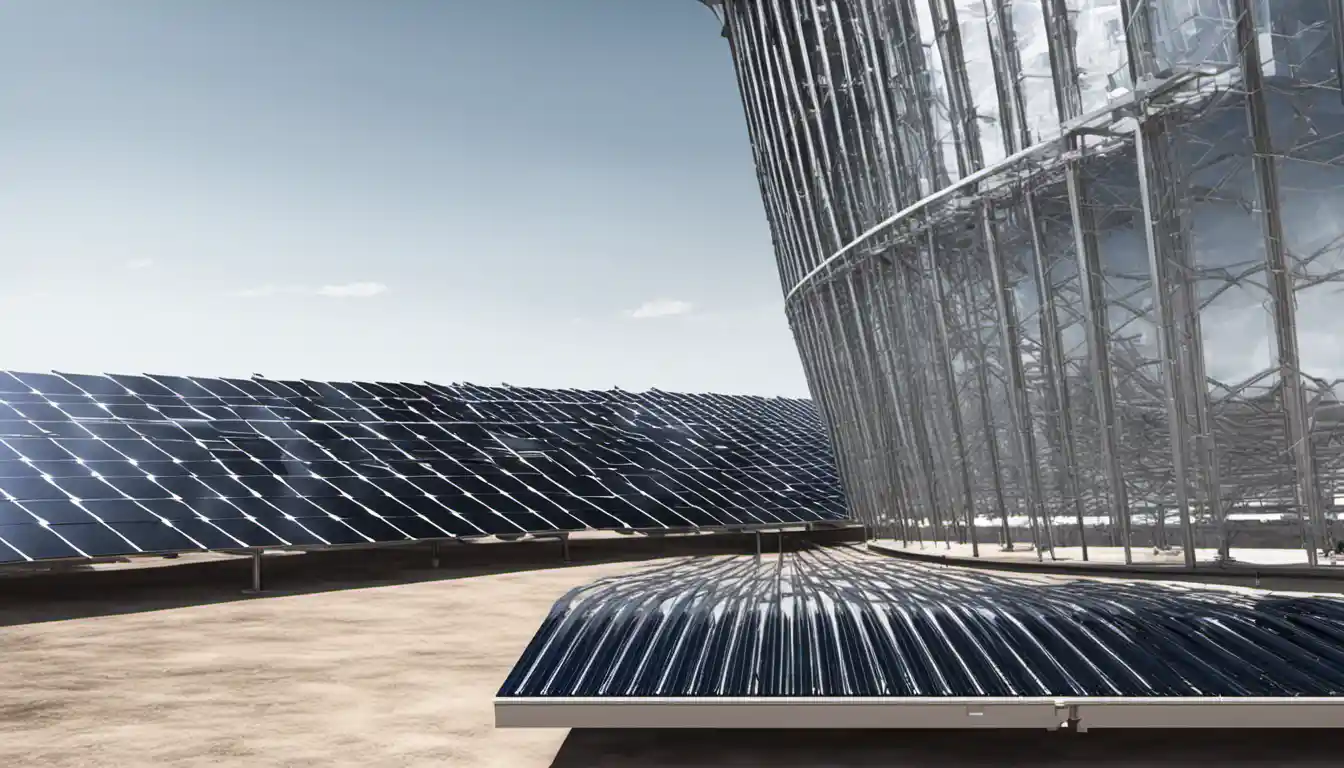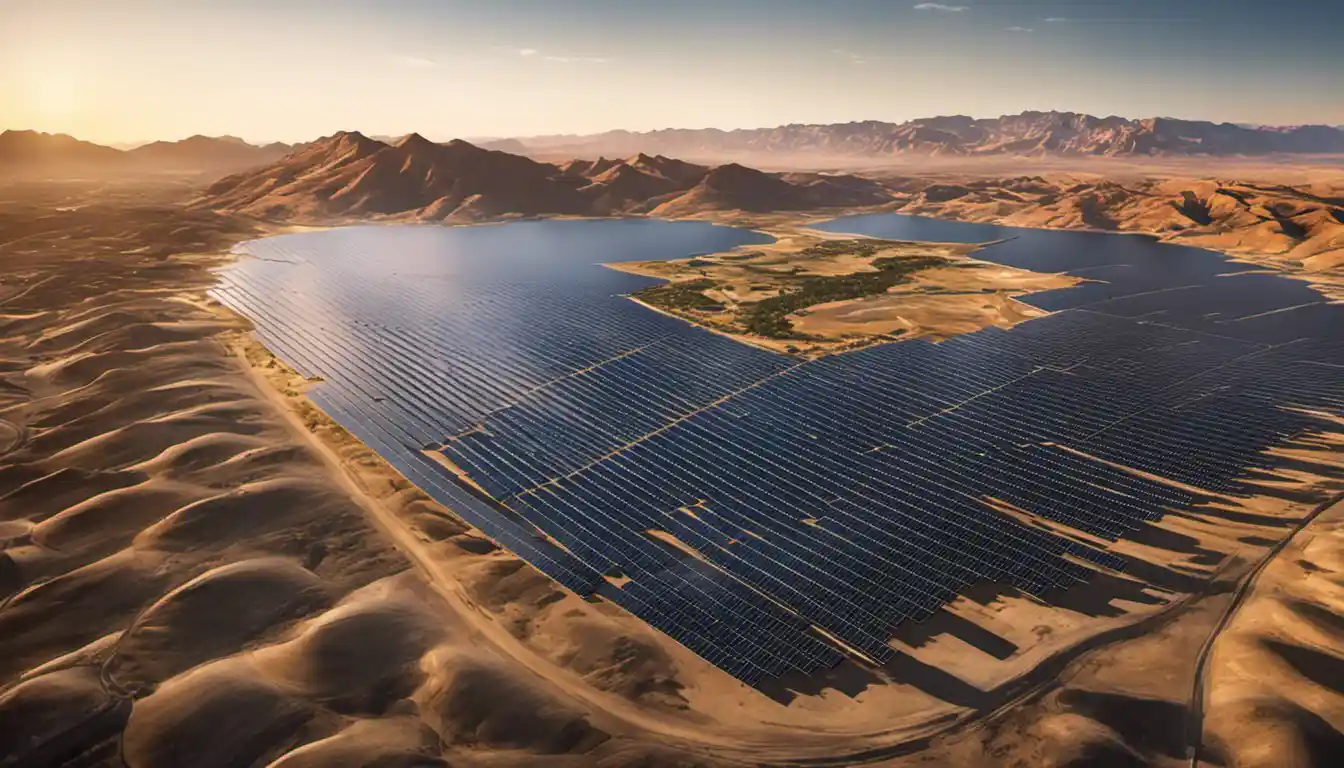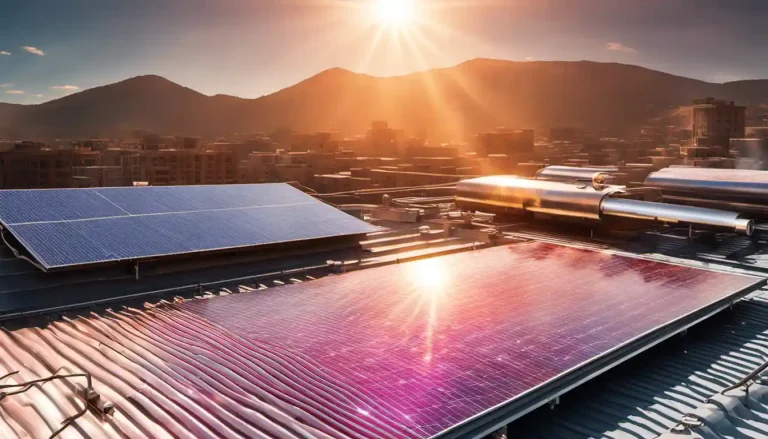Introduction to Solar Water Heaters
The cost of a solar water heater can vary greatly based on the type, size, and brand, but on average, it can range between $1,000 to $5,000 before installation. The cost of professional installation may add another $1,000-$2,500. Keep in mind some places may also offer incentives or tax credits for solar power which can offset the initial costs.
Let’s dive in and dissect what solar water heaters are and how they function before we delve into the financial nitty gritty.
A solar water heater, as the name suggests, uses the energy from the sun to heat water for your household needs – whether that’s a nice, warm bath or a piping hot cuppa! For more on the ins and outs of solar water heating, check out our comprehensive guide on What is Solar Water Heating.
Solar Water Heater: Types and Their Differences
There are generally two types of solar water heaters: Passive and Active.
Passive solar water heaters use natural convection to circulate the water, whereas active systems use pumps and controllers. The latter is typically more expensive, yet it is arguably more efficient.
Speaking of efficiency, solar collectors are also an important factor in the overall operation of solar water heaters. Flat-plate collectors and evacuated-tube solar collectors are the two main types. The type of solar collector used can impact the price – something we’ll discuss in more depth later.
Price Analysis: The Cost of a Solar Water Heater

“The cost of a solar water heater” isn’t a one-size-fits-all number. It fluctuates greatly due to factors including size, materials used, and even your geographical location.
Pricing based on Size
Reflect on your family’s hot water consumption. A household with two people will require a smaller heater, such as a 50-gallon capacity tank, than one with six people, which would benefit from a 120-gallon capacity tank. These different sizes obviously come with different price tags – ranging from $1,000 for a smaller size and reaching upwards of $3,000 for the largest.
Pricing based on Materials
Quality and durability impact price. Stainless steel tanks, reputed for their longevity, command a premium. Cheaper models might use enamel tanks which while more budget-friendly, may not last as long.
Breakdown of Part Prices

The bulk of a solar water heater’s cost consists of two parts: the solar collector and the water storage tank. Other components such as valves, pumps and controllers in active systems also contribute, but usually to a lesser extent.
Examining the Cost of Labor and Location Factors
Much like an iceberg, your total investment doesn’t end with just the visible upfront purchase of the system. There are hidden costs beneath the surface – installation and location-based costs.
Labor Costs
Professional installation can range from $500 to $2,500, depending on the complexity of the system.
Location-Dependent Costs

Another caveat on cost is location. If you live in sunnier regions, you may find better-cost solar solutions due to the higher prevalence and demand of these systems. Also, modification of existing solar structures due to local codes and regulations can cause price variations.
Breakdown: Solar Water Heater Costs by Type
Distinct types of solar water heaters have varied costs too.
…
Let’s cut to the chase though. Given all these costs, are solar water heaters worth it?
Solar Water Heaters: Are They Worth the Cost?
Absolutely. Let me explain why.
While the initial investment of a solar water heater may give you sticker shock, these systems typically save homeowners around 50% to 80% on water heating bills annually. Plus, with the federal tax credit, you could recoup up to 26% of the total cost of the system, including installation.
Not to mention, they’re super green – reducing your carbon footprint by 50%. Talk about a win-win.
More detailed breakdowns of the cost benefits can be found in the section: Solar Water Heater: Are They Worth the Cost?
This 2022 guide aimed to give you detailed information on “how much does a solar water heater cost”. Now that you’ve got all the facts, hopefully, it’s given you a clearer direction for your solar-driven journey.




50 thoughts on “How Much Does Solar Water Heater Cost? Ultimate Guide for 2022”
Comments are closed.